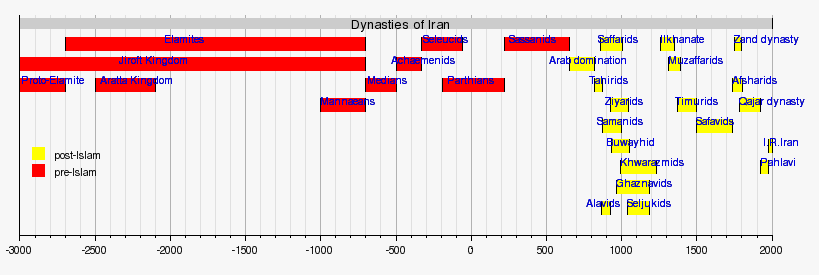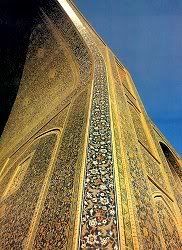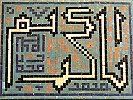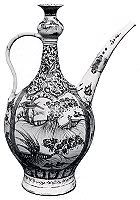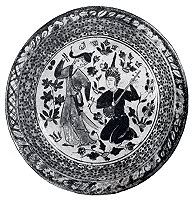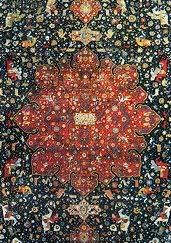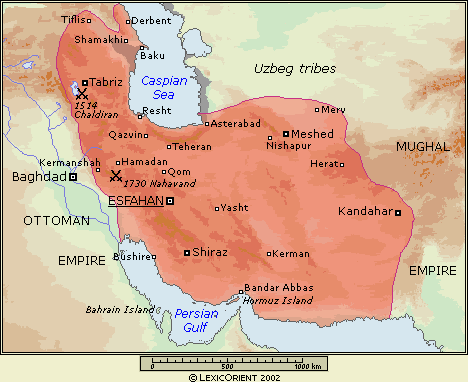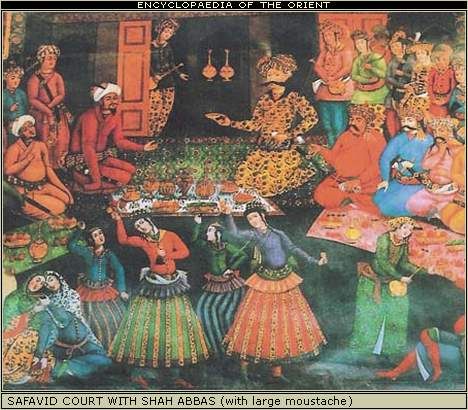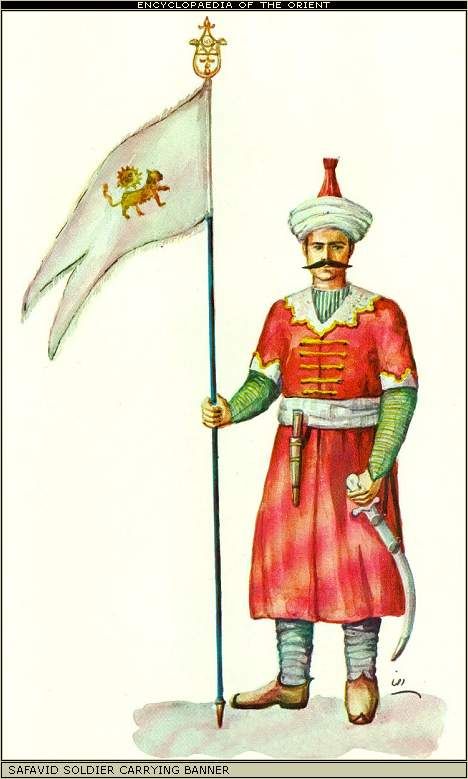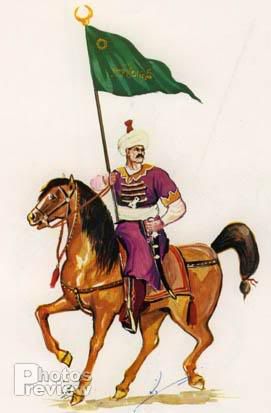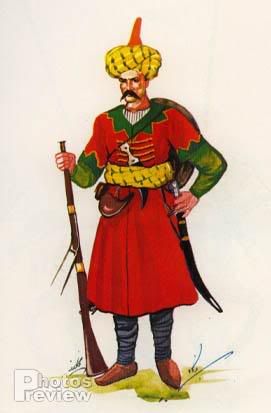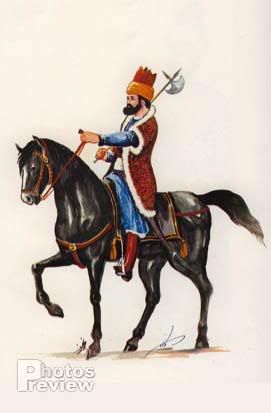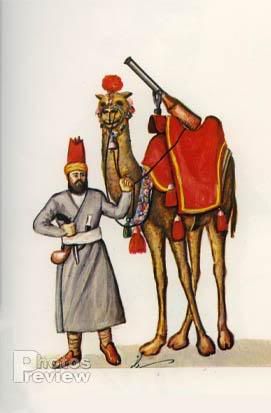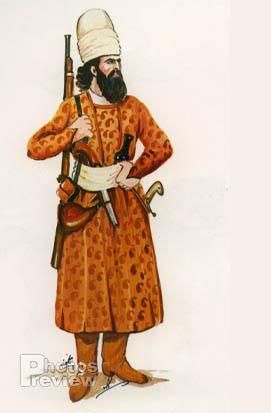This thread is aimed at collecting useful ideas for Iran in EUIII
Mongol Era
1220 -- Gangis Khan and his Mongol hordes attacked Persia with unparalleled brutality, bringing about one of the worst catastrophes in the history of mankind. In Persia's northeastern provinces, his descendants, especially Hulagu Khan, razed almost every major city, destroyed libraries and hospitals and slaughtered entire populations. The death toll estimates ranged in the millions.
1227 -- Gangis Khan died. His empire was divided among his sons.
1258-1353 -- The Mongols sacked Baghdad in 1258, thus ending the Abbasid Caliphate. The Il-Khanid dynasty gained control of the segment of the Mongol Empire covering Persia.
1271 -- Marco Polo journeyed through Persia on his way to China. In his Book of Travels, he wrote about the Mongols' savagery: How sad it is, the destruction, waste and death inflicted upon this once mighty, prosperous and beautiful Persia.
1207-1273 -- Rumi, the greatest mystical poet of the Persian language and the author of Mathnawi, elevated Sufism to unprecedented heights. Although a Persian, he lived in Anatolia (his parents had migrated in fear of the Mongols' brutality). His poetry and philosophy had a significant influence throughout the Islamic world. His disciples founded the famous Whirling Dervish mystic order.
1274 -- Nasir Al-Din Tusi, an astronomer and philosopher, built the Maraghah observatory, the first observatory in the modern sense in the history of science. He developed the mathematical calculations showing the earth's revolution around the sun and its spherical shape and size. His work was later translated into Latin and predated, by some 200 years, that of Copernicus, considered the founder of modern astronomy and the originator of the idea of a solar-centered universe.
1213-1292 -- Sa'di wrote two of the most significant Persian works, The Bustan and The Gulistan. His poems exercised wide influence in India, Central Asia and as far as the Muslims in China. His poems emphasized the interdependence of all mankind regardless of nationality, race or religion. He asked for the following inscription on his tomb: From the tomb of Sa'di, son of Shiraz - the perfume of love escapes - thou shall smell it still 1,000 years after his death.
1295 -- Ghazan Khan became the first Mongol Il-Khanid leader to convert to Islam. After his conversion, the Mongols, like the Greek, Arab and Turkic invaders before them, became "Persianized." Ghazan Khan's prime minister, Rashid ad-Din, was a Persian scholar who wrote one of the earliest works of universal history, Jami' Al-Tawarikh. After almost one hundred years of Mongol devastation, Rashid ad-Din's policies brought about a short-lived period of peace and prosperity. The vast Mongol Empire helped to facilitate the exchange of ideas and goods among China, India and Persia.
1320 -- Kamal Al-Din Farsi pioneered major advances in the field of optics with his theories on refraction and reflection.
1320-1390 -- Hafez, the greatest lyric poet of the Persian language, wrote his most famous work, The Divan. Hafez was a Sufi and his poetry is characterized by the sense of beauty, love of humanity and devotion to God.
1405 -- Timur (Tamerlane), a Turco-Mongol leader, conquered much of Persia and its surrounding areas. His conquests yet again consisted of unimaginable cruelty and devastation. Although brutal, he was also a patron of arts. He made Samarqand his capital and brought artists from all over Persia. After his death, his empire disintegrated, but his descendants ruled over various parts of Persia for almost a century.
1429 -- Jamshid Kashani, a major mathematician, advanced number theory, invented the first calculating machine and participated in the astronomical activities at Samarqand.
--------------------------------------------------------------------------------
Safavid Dynasty
1501-1524 -- Shah Ismail I united all of Persia under Iranian leadership after some nine centuries of foreign or fragmented rule. Being a Shi'ite, he declared Shi'ism as the state religion and converted virtually all of Persia and some surrounding areas under his control from Sunnism to Shi'ism. Shi'ism became a medium for the Persians to differentiate themselves from the rest of the Islamic world, in particular from the Sunni Ottomans. To ensure its continuation as the state religion, the Safavid kings in general supported the Shi'ite clergy.
1587-1629 -- The reign of Shah Abbas the Great marked the pinnacle of the Safavid dynasty. He developed a disciplined standing army and defeated the Ottomans. In 1598, he chose Isfahan as his capital. A strong supporter of the arts, especially architecture, he adorned Isfahan with some of the finest Islamic monuments in the world. He built a number of mosques, schools, bridges and a major bazaar. During his reign, Persian craftsmen and artists excelled in creating fine silks, cloths, porcelain, metalwork, calligraphy, miniatures and carpets.
1501-1722 -- The two contemporary Islamic rivals of the Safavids, the Ottomans in Anatolia and the Mughals in India, relied on Persian artisans and poets for much of their arts and literature. Persian was the language of choice in both of their courts. This preference is evident from their poems and miniature paintings whose texts were almost exclusively written in Persian. Persian influence was especially prevalent in India, where it was also the cultural and administrative language; it remained so until the colonization of India by the British. The Taj Mahal's principle architect was a Persian named Ustad Isad and its architectural style was significantly influenced by Persian designs.
1722 -- Mahmoud Khan, an Afghan chieftain and a vassal of the Safavids, attacked Persia and captured Isfahan with virtually no resistance, thus ending the Safavid dynasty.
1729-1747 -- Nader Shah, an officer of the Safavids, was able to expel the Afghans and reunite the country. He was a brilliant military strategist, defeating the Ottomans, Russians, Indians and various local tribes. In his invasion of Mughal India, Nader Shah captured two of the world's greatest diamonds, the Sea of Light (now in Iran) & the Mountain of Light (now part of the British Crown Jewels). Nader Shah became increasingly paranoid and was assassinated by his own guardsmen. After his death, his great military machine collapsed.
1747-1779 -- Karim Khan Zand gained control of central and southern parts of Iran. He was a compassionate ruler who refused to assume the title of Shah and referred to himself as the Representative of the People. He fought extensively with a rival tribe, the Qajars. After Karim Khan Zand's death in 1779, Aqa Mohammad Khan Qajar gradually vanquished the Zands and established the Qajar dynasty.
--------------------------------------------------------------------------------
Qajar Dynasty
1795 -- Although the Qajars succeeded in reuniting the country, they were generally weak and corrupt rulers. The economic and military gap between Iran and the West widened considerably under their reign - especially in light of the Industrial Revolution that was taking place in the West. However, the Qajar period also enjoyed a high degree of artistic excellence, producing some of Iran's finest paintings, tileworks and architectural monuments.
1813 & 1828 -- European imperialism resulted in English and Russian penetration in Iranian affairs. The Qajars lost the Caucasus (present day Georgia, Armenia and Azerbaijan) to the Russians in two separate treaties: the Gulistan in 1813 and the Turkmanchay in 1828. As a result of the 1828 treaty, the Qajars were forced to enact the "Capitulation" law, exempting all foreign citizens from Iranian jurisdiction. This law deeply
humiliated the Iranian people.
1851 -- Amir Kabir, a prime minister of the Qajars, tried to introduce many reform initiatives but was assassinated by his corrupt enemies within the court * a fate shared by an earlier reform-minded prime minister of the Qajars.
Last edited:



